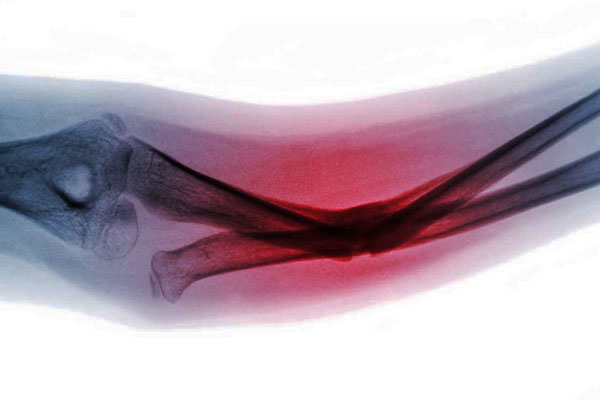Closed Reduction and Internal Fixation
When a bone is fractured, the bone fragments will get displaced or lose their normal alignment. If the bones' alignment problems are ignored, they may be able to heal in the same position. Short-term effects could include the nearby joints becoming immobile or joint surfaces becoming damaged as a result of aberrant pressure transmission. Various orthopaedic procedures are available to repair the fracture and realign the dislocated bone fragments. The fractured bones, without any deformity, can be realigned to their anatomical position by a closed reduction procedure.

What are closed reduction and internal fixation?
Closed reduction and internal fixation (CRIF) is an orthopaedic surgical procedure where the pieces of a broken bone are placed back into the right position indirectly without opening the fracture site per se, and this position is held in place using wires, pins, or metal plates. The procedure helps to manage bone fractures by realigning the bone fragments and stabilising the fragments using internal fixation.
When are closed reduction and internal fixation recommended?
Your orthopaedic surgeon may recommend CRIF for the following specific conditions:
- Fracture of the femur's neck Trochanteric fractures between
- Fractures where the shafts of long bones (the humerus, femur, and tibia) are involved, where treatment is done by intramedullary nails
- Many children fracture.
How do I prepare for this procedure?
A closed reduction is often performed as an emergency procedure. Your surgeon may inquire about:
- The time of your last meal
- Medicines and supplements that you take
- History of allergy
- Other medical conditions like diabetes, hypertension, etc.
You will also get instructions on how to arrange for someone to ride you back home after the procedure.
The anaesthesia team will examine you before the procedure.
What happens during the procedure?
Before the surgical procedure, you will be shifted to the operating room.
- Your anaesthesiologist will administer the anaesthesia or sedative medications through an intravenous line in your arm.
- You will be given an antibiotic along with anaesthesia to decrease the risk of infection.
- The surgeon will manipulate the fracture by placing the bone in the right position by pushing or pulling the bone. This procedure is known as traction.
- Once the fragments are aligned in the correct position, metal plates, screws, wires, or pins are used to hold the fragments in place.
- A cast or splint may be used to give rest to the operated part post-surgery.
What are the post-procedure care?
Soon after the procedure, you will be shifted to the recovery room, where you will be monitored until the effects of anaesthesia wear off. Following the procedure, once you are completely awake, you will be given some drugs for temporary pain. You may also be taught how to use crutches.
If you do not have other injuries or problems, you will be able to go home the same day of the surgery or the next day. Before leaving, your surgeon will refer you to a physical therapist for rehabilitation therapy. The surgeon may give you some instructions for post-procedure care at home. They may include:
- Take medicines to relieve pain and prevent infections.
- Give proper rest and keep the affected area in an elevated position to avoid swelling.
- Exercise as recommended by your physiotherapist to gain strength and a complete range of motion.
- Visit the hospitals on the scheduled dates.
When the bone is healed, your surgeon may remove the pins, wires, and screws that were fixed during the procedure. Healing may take about 8 to 12 weeks, depending on the severity of the fracture. You may return to your normal activities as per the instructions of the surgeon and physical therapist.
